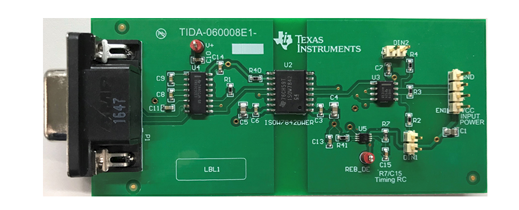The SN74LVC1G123 electronic component is a retriggerable monostable multivibrator from TI Texas Instruments designed for 1.65V to 5.5VV CC operation. TOPCHIP ELECTRONICS, which sells the full range of Texas Instruments IC electronic components, provides you with SN74LVC1G123 Chinese parameters, SN74LVC1G123 schematic diagram and SN74LVC1G123 application reference design.
This monostable multivibrator features three methods of controlling the output pulse duration. In the first method, the A input is low and the B input is high. In the second method, the B input is high and the A input is low. In the third method, the A input is low, the B input is high, and the clear (CLR) input is high. The output pulse duration is programmable by selecting external resistor and capacitor values. An external timing capacitor must be connected between C ext and R ext /C ext (positive), and an external resistor must be connected between R ext /C ext and V CC . To obtain variable pulse duration, connect an external variable resistor between R ext /C ext and V CC .
The output pulse duration can also be reduced by pulling CLR low. Pulse triggering occurs at a specific voltage level and is not directly related to the transition time of the input pulse. The A and B inputs have Schmitt triggers with sufficient hysteresis to handle slower input slew rates with jitter-free triggering at the outputs.
SN74LVC1G123 parameters
Number of channels: 1
Supply voltage (minimum) (V): 1.65
Supply voltage (max) (V): 5.5
Technology Family: LVC
Input type: Schmitt trigger
Output type: push-pull
Supply current (μA): 20
IOL (max) (mA): 32
IOH (max) (mA): -32
Features: Balanced output, high speed (tpd 10-50ns), overvoltage resistant input, partial power outage (Ioff)
Operating temperature range (°C): -40 to 125
SN74LVC1G123 schematic diagram

SN74LVC1G123 Application Reference Design
This reference design provides circuitry to convert RS-232 signals to RS-485 signals. This allows for long-distance communications, as RS-232 typically supports a range of less than 50 feet, while RS-485 can support a range of over 1000 feet. The design enables bidirectional half-duplex communication without any software interference.

Reference design features for converting RS-232 signaling to RS-485 signaling
Converts RS-232 signals to RS-485 signals for bidirectional half-duplex communication without any software interfering with hot-swap functionality
Low voltage design. The design works with 3.3V and 5V supplies
Industrial grade ESD protection
RS-232 port: IEC 61000-4-2, ±8 kV contact, ±15 kV air
RS-485 port: IEC 61000-4-2, ±30 kV contact, ±30 kV air; Electrical fast transient, IEC 61000-4-4, 50 A; Surge, IEC 61000-4-5, 19 A
Isolation: 5000 Vrms isolation protection
Extend system topology from point-to-point to multipoint
Cable lengths up to 1000 feet
RS-232 signaling to RS-485 signaling design application areas
Air circuit breaker (ACB)
aircraft cockpit display
Analytical laboratory instruments
battery test
Interconnect/Distribution Box
Precision Analog Input Data Acquisition
Signal generator
Wireless communication test
If you need data manuals, sample testing, procurement, BOM ordering, etc., please contact us via the following email address:

